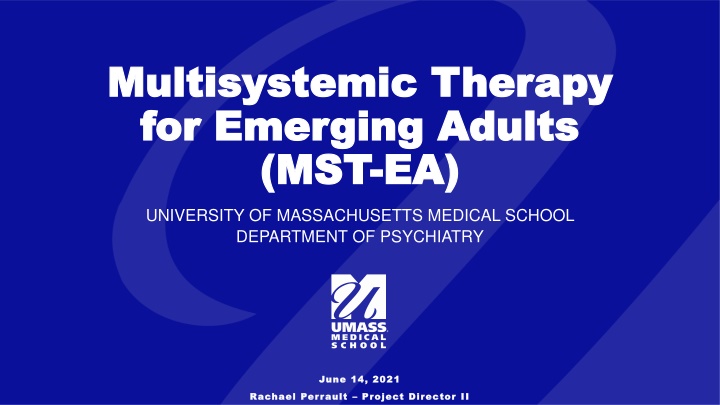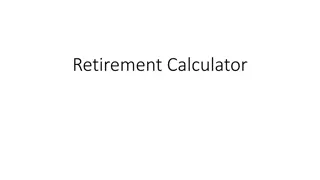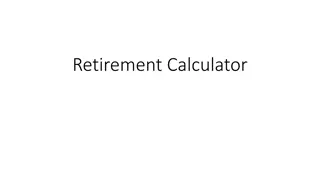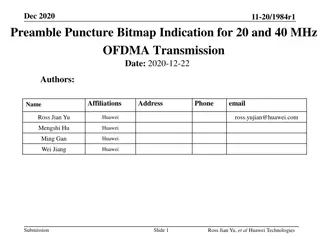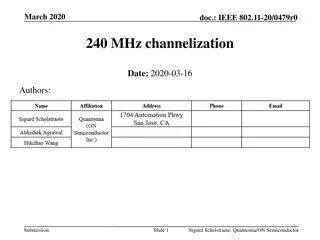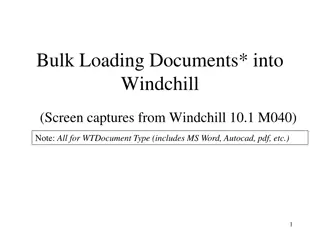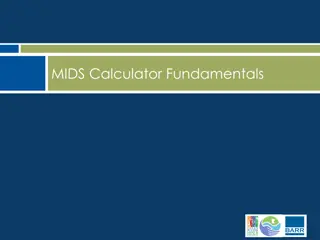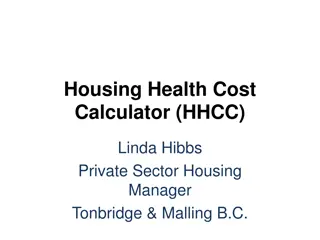Channel Loading Calculator for 700 MHz Regional Planning
This Channel Loading Calculator provides guidance for determining the minimum number of channels needed for optimal radio service. It focuses on obtaining valid data for existing systems, such as airtime usage per radio. The empirical data is based on a specific Motorola simulcast trunking system in Oregon. Utilizing Erlang C default settings, the calculator considers various statistics like agencies, talk groups, subscribers, and push-to-talks. With a user-friendly approach, this tool helps preserve spectrum efficiency while delivering reliable radio communication.
Download Presentation

Please find below an Image/Link to download the presentation.
The content on the website is provided AS IS for your information and personal use only. It may not be sold, licensed, or shared on other websites without obtaining consent from the author.If you encounter any issues during the download, it is possible that the publisher has removed the file from their server.
You are allowed to download the files provided on this website for personal or commercial use, subject to the condition that they are used lawfully. All files are the property of their respective owners.
The content on the website is provided AS IS for your information and personal use only. It may not be sold, licensed, or shared on other websites without obtaining consent from the author.
E N D
Presentation Transcript
Multisystemic Therapy Multisystemic Therapy for Emerging Adults for Emerging Adults (MST (MST- -EA) EA) UNIVERSITY OF MASSACHUSETTS MEDICAL SCHOOL DEPARTMENT OF PSYCHIATRY June 14, 2021 June 14, 2021 Rachael Perrault Rachael Perrault Project Director II Project Director II
Project Description Project Description Two randomized clinical trials, psychosocial intervention Sample Recruitment in Connecticut and Tennessee Young adults aged 16-26 Recent justice involvement (arrested or released from detention/jail/prison in past 18 months) Current behavioral health condition(s) COVID-19 questioned introduced early May 2020
Sample Description Sample Description National Institute of Mental Health (n = 193, stopped recruiting 3/21) National Institute on Drug Abuse (n = 155, actively recruiting) Combined N = 348 40% Mood Disorders 51% Anxiety Disorder/PTSD 83% SUD 76% SUD, Cannabis 50% Comorbid, MH/SUD
COVID COVID- -19 & Sample 19 & Sample 3% Reported COVID-19 diagnosis since March 2020 9% Quarantine due to self-exposure Days of school/training missed due to quarantine = 0 30 days Days of work missed due to quarantine = 0 9 days 1 participant hospitalized due to COVID-19
COVID COVID- -19 & Sample, cont. 19 & Sample, cont. 4% Reported someone within household diagnosed with COVID-19 since March 2020 4% Reported Household quarantine Days of school/training missed due to quarantine = 5 14 days Days of work missed due to quarantine = 0 5 days 17% reported disruption in work for someone in the home
COVID COVID- -19 & School, Work/Making Money 19 & School, Work/Making Money Effects of COVID-19 on School/Training Program Technology Issues Logistical Issues Learning Environment Social Environment
COVID COVID- -19 & School, Work/Making Money 19 & School, Work/Making Money (2) (2) Effects of COVID-19 on finding a job Effects of COVID-19 on Work/Making Money Loss of job (fired or quit) or reduced hours Working Conditions Family Issues Social Environment 44% reported making the same amount of money before and during pandemic; 30% less money; 27% more money
